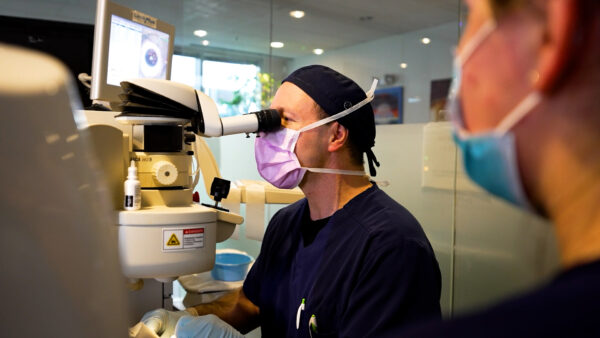Like LASIK, Photorefractive Keratectomy (PRK) is a proven laser eye surgery procedure to correct nearsightedness, farsightedness, and astigmatism. PRK offers an excellent success rate and an ideal alternative for patients who may not be a good candidate for LASIK surgery. While PRK and LASIK are similar in many ways, the recovery process for each procedure is a bit different.
Ahead, we’ll cover the key steps and milestones of PRK laser eye surgery recovery, so you’ll know exactly what to expect on the path to better vision.
PRK Laser Eye Surgery Recovery: Timeline and Key Recovery Milestones
The biggest difference between PRK and LASIK is no flap is required for PRK laser eye surgery. Both procedures reshape the cornea to address vision problems, but the lack of a flap with PRK is actually why it’s a good fit for people who may not be a good candidate for LASIK surgery.
- First Days of PRK Recovery – The first few days of PRK laser eye surgery recovery will mostly be dedicated to resting, to allow the healing process to take its course. A soft contact lens “bandage” will be placed on the cornea to help protect your eye. Typically, the bandage is worn for 5 days. You may experience some itching, or discomfort during the first few days, but these symptoms clear up progressively as your eyes get a chance to heal. Your doctor will typically schedule your first follow-up appointment shortly after your PRK surgery, to check on your progress and answer any questions you may have.
- Eye Protection and Lubrication – With PRK recovery, it’s important to provide your eyes with the protection they need to heal. Dry eye is very common after any eye surgery, so using the eye drops your doctor prescribes is highly recommended, and you will also have eye protection for while you sleep. It’s important to avoid rubbing your eyes even when they itch, because rubbing can lead to a longer recovery.
- Follow-up Visits – You will have a series of follow-up visits during your PRK recovery period, with a longer duration between each visit as you move through the healing process. These visits are very important, so be sure to attend every scheduled check-up to make sure that everything is progressing as planned. Your checkups are also the perfect time to ask your doctor about resuming specific activities.
- Weeks after PRK – In the weeks after PRK surgery, you may experience sensitivity to light, difficulty seeing at night, and a halo effect around bright lights. These are all normal symptoms, and should resolve themselves as your eyes continue to heal. The first month tends to feature a pretty rapid improvement, and you’ll even notice a big difference by the end of the first week.
- Months after PRK – By this point, recovery symptoms should be a thing of the past, and you should be enjoying the benefits of improved visual acuity from PRK. You may still have a few scheduled checkups with your doctor, but these appointments are mostly to make sure that things are progressing as planned. Just like with LASIK, the six-month mark is a major milestone for PRK recovery.
Having the right laser eye surgeon on your side makes a big difference in your PRK recovery, so be sure to choose a team that makes you feel comfortable – and keeps you informed – throughout the process. You’ll be enjoying your favorite activities with newfound clarity before you know it.
Categories:



